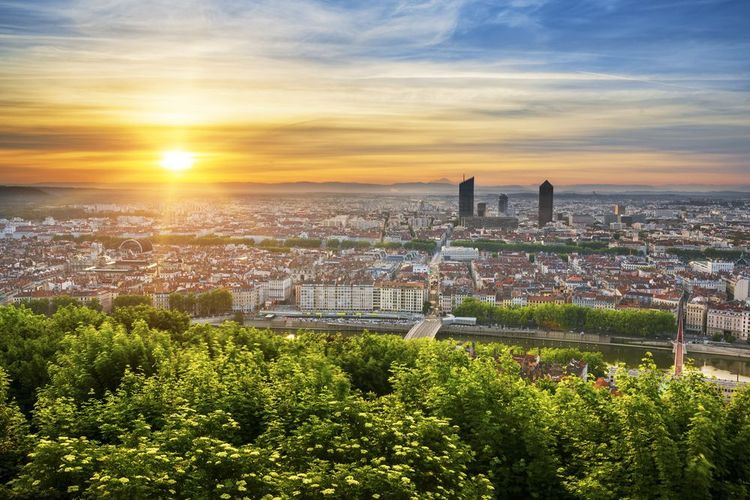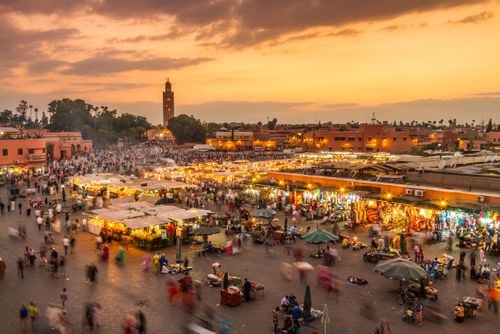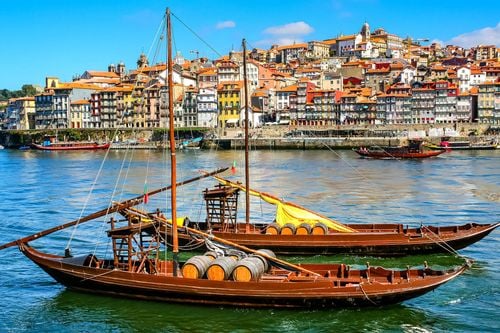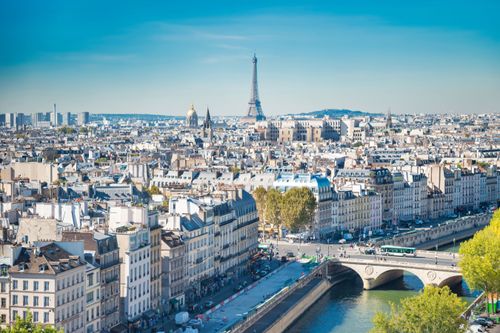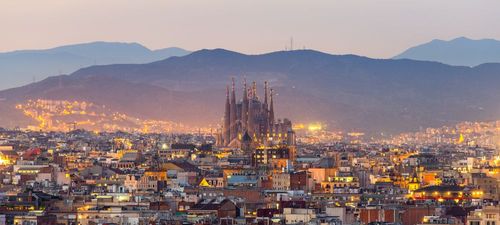Stroll through the colourful streets of Vieux-Lyon, a blend of medieval and Renaissance architecture. The district experienced its golden age during the Renaissance, after centuries of religious and commercial activity. Traboules were built and four fairs were held, bringing tourists to the district. Today's architecture, renovated after the war, stems from this key period for Vieux Lyon. Highly inspired by Italian know-how, following the arrival of banking and business families, the buildings are narrow and full of charm.
From Saint-Georges to Saint-Paul, via Saint-Jean, Vieux Lyon, a UNESCO World Heritage site, is organised around three religious buildings. Set beneath the Fourvière hill, this district is a favourite with tourists and reflects the richness of Lyon's architecture. Its cobbled streets and Renaissance-style buildings are a big part of its reputation. A real place of history and conviviality, Vieux Lyon is home to many traditional Lyonnais restaurants, the famous "bouchons", which are a delight for bon vivants. After enjoying an andouillette and a glass of Beaujolais, there's nothing better than going inside the buildings to discover one of the 300 traboules, secret passageways and covered passageways typical of the city. Some of the buildings are well hidden, so look up and take in the sights!
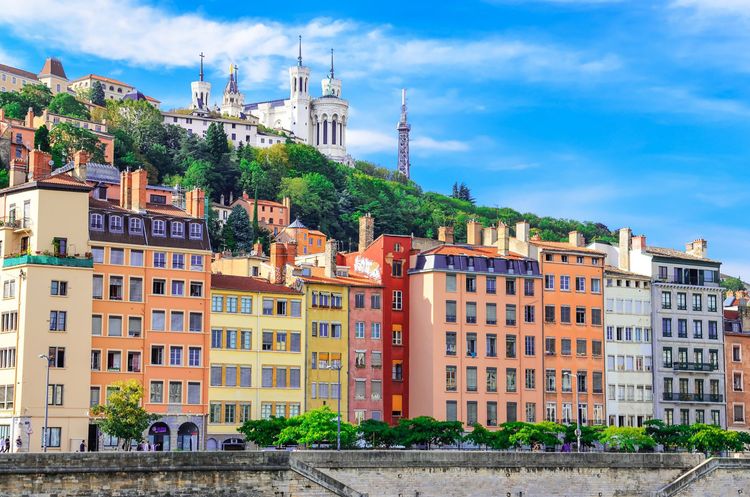
View of Vieux Lyon from the Saône
- © Martin Molcan / 123RFA neighbourhood that has stood the test of time

Rue du Vieux Lyon, in the sunshine
- © BalkansCat / ShutterstockThe traboules, secret passageways
Formerly small passageways built to cross from one street to another, through the courtyards of buildings, traboules are now an emblematic attraction of the city. In all, more than 300 openings have been created since the 4th century! Nowadays, not all of them are accessible, but there are still enough to discover the jewels of Lyon's courtyards.
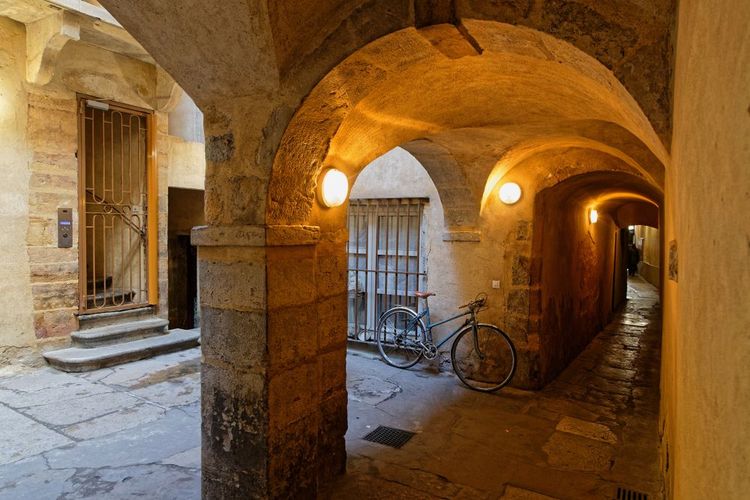
Traboule du Vieux-Lyon
- © Pierre Jean Durieu / ShutterstockTo identify them, the buildings in Vieux-Lyon bear a yellow plaque with a lion's head, and in the Croix-Rousse district a bronze plaque in the shape of a shield. Between rue Saint-Jean and rue du Boeuf, a long traboule runs through several buildings and is still very useful to residents today. If you want to see the so-called Tour Rose (Pink Tower), you can also visit rue du Boeuf, in a courtyard full of character and much sought-after by tourists.

Maison du Crible, known as the Pink Tower, in Vieux Lyon
- © Tatiana Popova / ShutterstockSaint-Paul, historical influences
Home to the creator of Guignol, Saint-Paul, to the north of Vieux Lyon, has a strong Guignol influence. A visit to the Théâtre de Guignol will take you back two centuries. Laurent Mourguet, a former canut, became a merchant-forain and it was during this period that his famous puppet was born. During your walk, take the time to pass by the Maison Mourguet, where he lived and performed for almost 40 years.
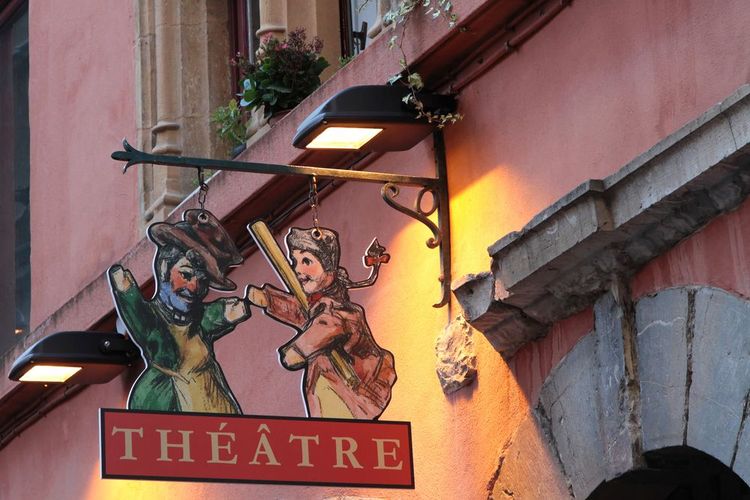
Sign for the Théâtre de Guignol in Lyon
- © Pierre Jean Durieu / ShutterstockFrom the house, rue Juiverie and its medieval atmosphere lead visitors to the Place du Change. A haunt of Italian bankers during the Renaissance, this cute little square and its temple offer a little grandeur and space between the intimate streets of the district. For a longer look at the Pink Tower in Saint-Paul, take a seat at the Food Traboule food court! In a picturesque setting, two floors of restaurateurs and their varied gastronomy put everyone in agreement, before settling down under the glass roof andits unbeatable view.
Saint-Jean, the tourist buzz
A major monument in Vieux Lyon, Saint-Jean Cathedral attracts many tourists to the Saint-Jean district. With its Gothic allure and breathtaking stained-glass windows, you'll be stunned by the building! In front, the square of the same name and its fountain are perfect for adding to your photo album.
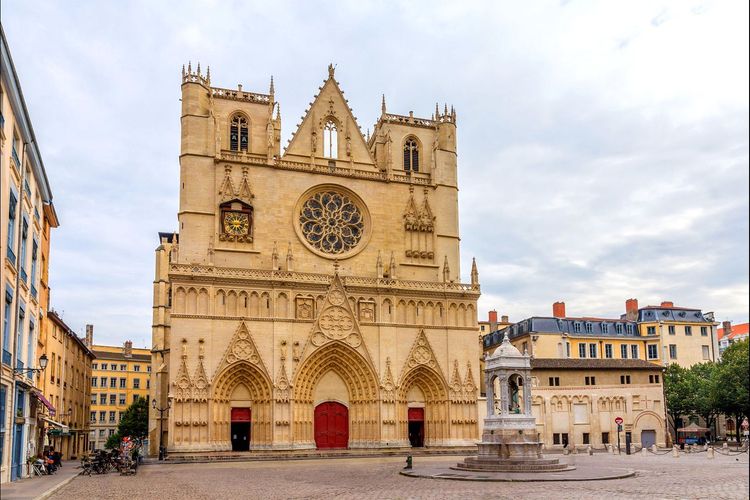
Saint-Jean Cathedral, Lyon
- © Leonid Andronov / 123RFTake a step-by-step tour of rue Saint-Jean, with its shops, restaurants and bars. If you feel like it (and are hungry), the bouchon Le Vieux Lyon will serve you typical local dishes, so you're sure to be immersed in the local culture! Another major monument! The Maison des Avocats, with its many dwellings and Florentine-style gallery, is a must-see on the street. We won't tell you any more about it, just discover it for yourself, under the watchful eye of a lion statue...
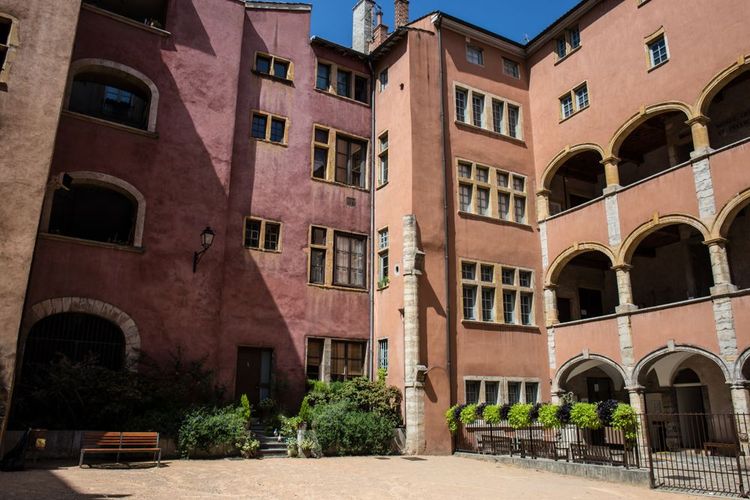
Lawyers' House, Lyon
- © this_is_ilya / ShutterstockSaint-Georges, a peaceful daily life
Much less touristy, the Saint-Georges district is inhabited by Lyonnais with a desire for the city centre, but combined with a royal calm. Everyone knows their neighbour, and traditions such as the Carnival, organised by the Dragons association, are sacred! The Renaissance architecture is still evident in the streets, albeit a little more outdated.
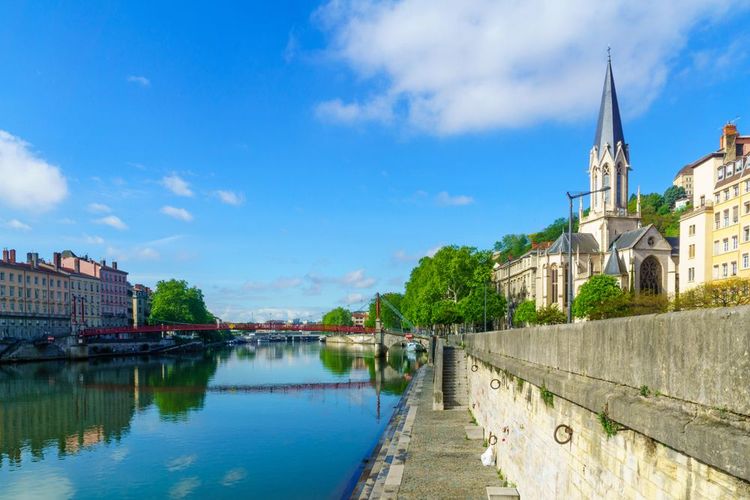
Saint-Georges church on the banks of the Saône.
- © RnDmS / ShutterstockA stone's throw from the hustle and bustle of Saint-Jean, the contrast is striking, but a quiet stroll along the Saône is very pleasant at the end of the day. Living in Saint-Georges is like living in Old Lyon, without the constraints!
Where to stay in Vieux Lyon?
⭐ Host inn Lyon - Hypercentre Vieux Lyon
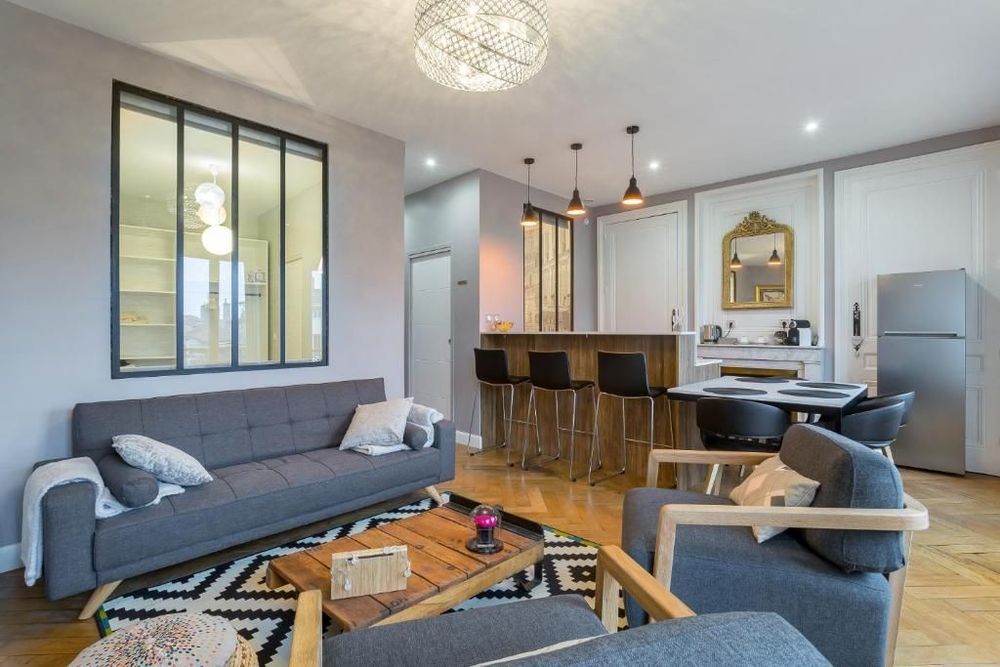 Lyon
Lyon
